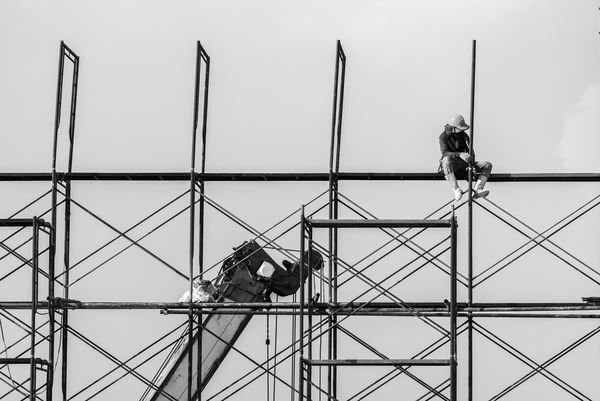Unsafe Scaffolding Can Result in Fatal Falls

It is unfortunate that too many construction workers continue to get severely injured or die from scaffolding accidents that could have been prevented if not for negligent and intentional employer violations. According to the New York Committee for Occupational Safety and Health’s (NYCOSH) 2019 Deadly Skyline report, deadly falls account for a whopping 64% of construction fatalities in NYC.
And just this May in Queens, a construction worker plummeted to the ground from a scaffold. 32-year-old Diego Lliguicota was pronounced dead upon arriving at the hospital.
Scaffolding Safety Standards that Employers SHOULD Follow But Usually DON’T
The Occupational Safety and Health Act (OSHA) details specific safety standards for assembling and using scaffolding. In most cases, however, employers cut corners when installing scaffolding, resulting in scaffolding that is poorly assembled, potentially deadly to workers, and violates various OSHA scaffolding standards, such as the following:
Scaffolds
A highly qualified individual should design the scaffolding and should be constructed and erected according to the design. Employers should likewise make certain that only trained and experienced workers move, erect, alter, or dismantle scaffolds. In addition, such operations should be performed under the direction and supervision of an individual qualified in erecting, moving, modifying, and dismantling scaffolding.
Access
Scaffold platforms that are more than two feet below or above an access point, construction workers should utilize one or more of the following as necessary:
- Hook-on, portable, stairway-type, or attached ladders
- Stair towers
- Walkways
- Ramps
- Integral prefab scaffolding access
- Direct access from a nearby scaffold, personnel hoist, structure, or similar surface
Platforms
Employers should make sure that all platforms on all working scaffold levels are fully decked or planked between the front guardrail supports and uprights with specific space requirements between adjoining platform units as well between the uprights and the platform.
Guardrails
Guardrails are required to meet OSHA’s scaffolding fall protection standards and should be installed along every platform ends and open sides. Additional guardrail requirements must likewise be met when using top rails, mid rails, mesh, screens, solid panels, and intermediate vertical members in accordance with OSHA guidelines.
Falling Object Protection
It is the responsibility of employers to protect construction workers from various objects that could fall from scaffolds. In conditions where there is a risk of equipment, materials, or tools falling from scaffolds and hitting workers below, employers should always follow specific requirements to ensure worker safety.
Worker Training
Under OSHA’s regulations, employers should likewise designate a qualified individual to train workers responsible for erecting, moving, disassembling, operating, maintaining, inspecting, and/or repairing scaffolds to spot potential risks related to these activities on the specific scaffolding systems they’ll be using. Additionally, employers should retrain workers when necessary.
Get Legal Advice from Our Experienced NYC Construction Accidents
When construction workers are killed or injured in scaffolding accidents, the experienced NYC construction accident lawyers of Lipsig, Shapey, Manus & Moverman P.C. can help injured workers or their families pursue compensation from various potentially liable parties. These parties could include employers, the contractor that installed or constructed the scaffolding, and/or the owner of the property where the scaffolding accident occurred. Call us at 212-285-3300 or fill out our online form to arrange your free consultation today.


